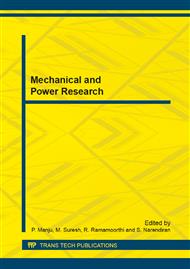p.157
p.166
p.172
p.178
p.187
p.194
p.204
p.210
p.220
Peak Power Reduction through Conic Optimized Sigma Clipping and Filtering
Abstract:
High Peak to Average Power Ratio (PAPR) of OFDM reduces transmitter power efficiency and increases complexity in hardware implementation. In the paper, the high PAPR is reduced using optimized Standard Deviation based Iterative Clipping and Filtering (SD-ICF).The proposed method achieves a greater reduction in PAPR in a few iterations with reduced out-of-band distortion and bit error rate when compared over classical clipping techniques.Also, the effects of oversampling on the performance of proposed OFDM system is discussed.
Info:
Periodical:
Pages:
220-227
Citation:
Online since:
May 2014
Authors:
Price:
Сopyright:
© 2014 Trans Tech Publications Ltd. All Rights Reserved
Share:
Citation:


